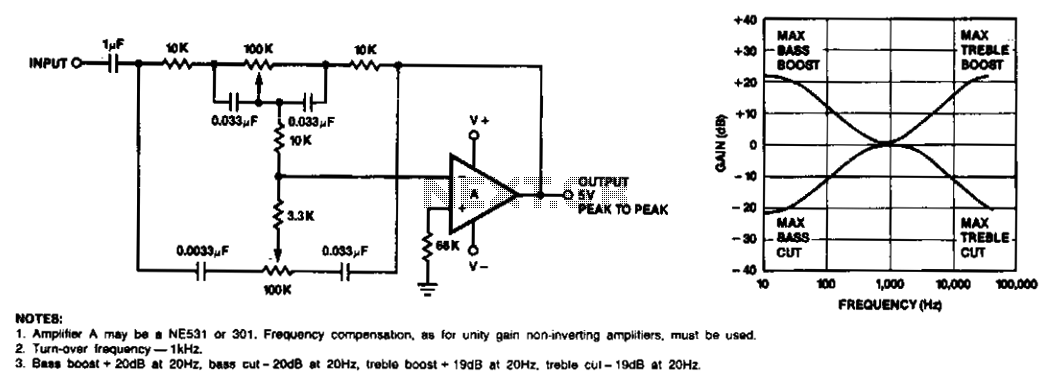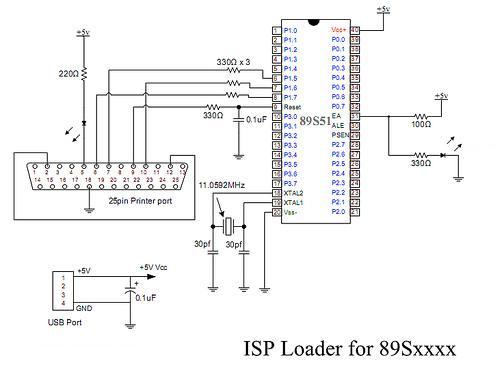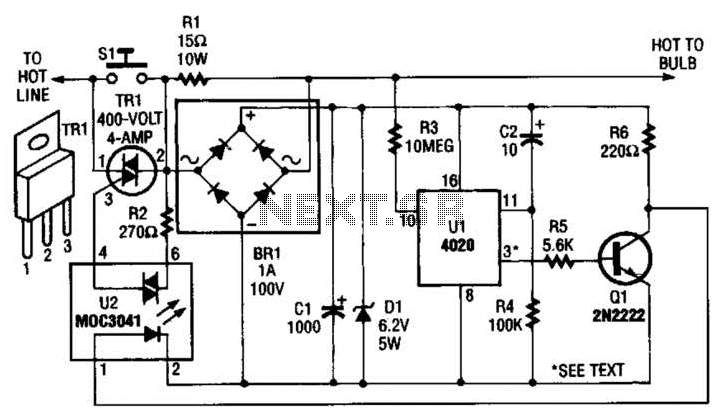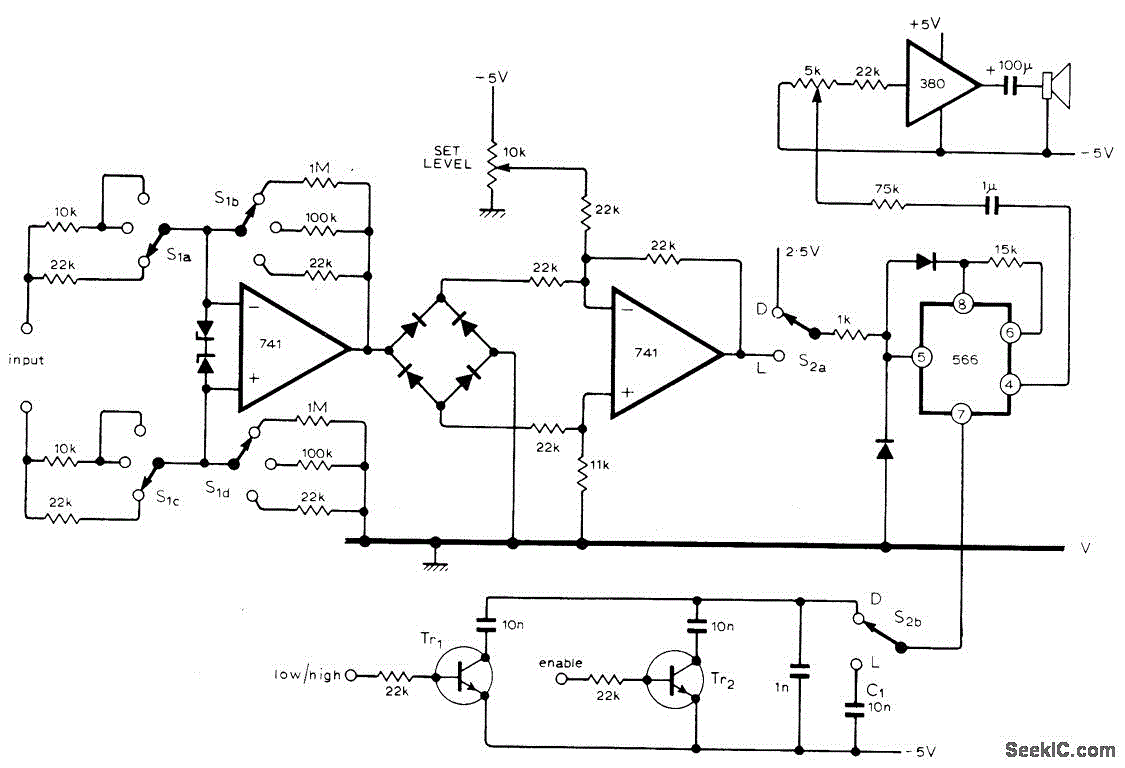
Tone control

Tone control in audio systems involves modifying the flat frequency response to enhance low or high frequencies based on listener preference. The circuit allows for a boost or cut of 20 dB in bass or treble, adjustable via a variable resistor. The actual response of the circuit is also illustrated.
The tone control circuit is designed to manipulate the audio frequency response, enabling users to tailor sound output to their preferences. This circuit typically utilizes operational amplifiers (op-amps) configured in a feedback arrangement to achieve the desired frequency response characteristics. The variable resistor, often referred to as a potentiometer, plays a crucial role in adjusting the gain of the bass or treble signals.
In a typical implementation, the circuit may include a low-pass filter for bass control and a high-pass filter for treble control. The low-pass filter allows frequencies below a certain cutoff to pass through while attenuating higher frequencies, effectively boosting the bass when the gain is increased. Conversely, the high-pass filter allows high frequencies to pass while cutting lower frequencies, enhancing the treble response.
The response curve of the circuit can be visualized using a Bode plot, which illustrates the gain versus frequency. This graphical representation shows how the circuit modifies the audio signal across the frequency spectrum, highlighting the 20 dB range for both bass and treble adjustments. The design may also include additional components, such as capacitors and resistors, to fine-tune the frequency response and ensure stability within the circuit.
Overall, the tone control circuit is an essential component in audio systems, providing users with the flexibility to enhance their listening experience by emphasizing specific frequency ranges according to personal taste.Tone control of audio systems involves altering the flat response in order to attain more low frequencies or more high ones, dependent upon listener preference. The circuit provides 20 dB of bass or treble boost or cut as set by the variable resistance. The actual response of the circuit is shown also.
The tone control circuit is designed to manipulate the audio frequency response, enabling users to tailor sound output to their preferences. This circuit typically utilizes operational amplifiers (op-amps) configured in a feedback arrangement to achieve the desired frequency response characteristics. The variable resistor, often referred to as a potentiometer, plays a crucial role in adjusting the gain of the bass or treble signals.
In a typical implementation, the circuit may include a low-pass filter for bass control and a high-pass filter for treble control. The low-pass filter allows frequencies below a certain cutoff to pass through while attenuating higher frequencies, effectively boosting the bass when the gain is increased. Conversely, the high-pass filter allows high frequencies to pass while cutting lower frequencies, enhancing the treble response.
The response curve of the circuit can be visualized using a Bode plot, which illustrates the gain versus frequency. This graphical representation shows how the circuit modifies the audio signal across the frequency spectrum, highlighting the 20 dB range for both bass and treble adjustments. The design may also include additional components, such as capacitors and resistors, to fine-tune the frequency response and ensure stability within the circuit.
Overall, the tone control circuit is an essential component in audio systems, providing users with the flexibility to enhance their listening experience by emphasizing specific frequency ranges according to personal taste.Tone control of audio systems involves altering the flat response in order to attain more low frequencies or more high ones, dependent upon listener preference. The circuit provides 20 dB of bass or treble boost or cut as set by the variable resistance. The actual response of the circuit is shown also.





